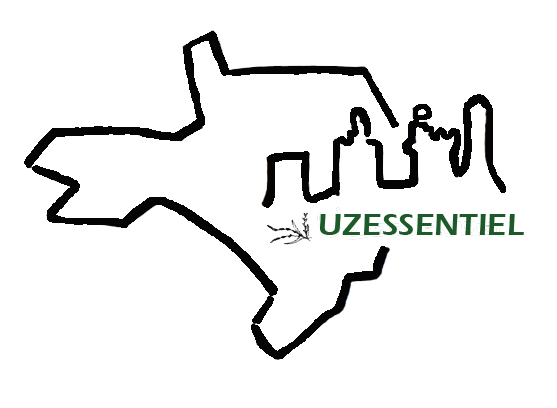The Roman tomb of Lanuéjols
FR - Located 50 kms from Florac and only a dozen from Mende, the Gallo-Roman tomb of Lanuéjols is estimated dating from the 2nd or 3rd century AD.
 Also known as the mausoleum of the Pomponii the tomb, which can be seen soon after the entrance of the village was built, as the inscription on the lintel suggests, "in memory of Lucius Pomponieus Basulus and Lucius Pomponius Balbinus by their parents", a family probably of Syrian origin.
Also known as the mausoleum of the Pomponii the tomb, which can be seen soon after the entrance of the village was built, as the inscription on the lintel suggests, "in memory of Lucius Pomponieus Basulus and Lucius Pomponius Balbinus by their parents", a family probably of Syrian origin.
Owned by the commune of Lanuéjols since 1805, the historical place has benefited from several archaeological excavation campaigns, undertaken between the 19th and 20th centuries (monstly in the 1980s), not to mention the excavation work (as was the case in 1813 and 1855).
Standing on a small green esplanade, slightly below the main road, the tomb has been buried several times under the sediments of the neighbouring landforms and the stream.
|
"In honour and memory of Lucius Pomponius Bassulus and Lucius Pomponius Balbinus, most respectful sons, Lucius Lulius Bassianus, their father, and Pomponia Regola, their mother, built this monument, as well as the surrounding buildings, from its foundation to its completion and dedicated it to their children" M. Allmer
|
The mausoleum, one of the best preserved of France with the one of Saint-Rémy-de-Provence, has been listed as a Historic Monument (France National Heritage) since 1840. It is completed by the remains of a second tomb, an altar and several blocks that form an alley leading to the mausoleum.
|
In ancient times, Lanuéjols was at the centre of the civitas of the Gabales, whose capital was Javols, about a hundred kilometres from Lanuéjols.
|
 Good to know: The dating of the building took place in several stages. Firstly, there was that of Emile Espérandieu, an archaeologist from Saint-Hippolyte-de-Caton in the Gard, renowned epigraphist and president of the Ecole Antique de Nîmes. This specialist in Roman antiquity, a fine connoisseur of Gaul, placed the construction of the mausoleum in the 1st century AD.
Good to know: The dating of the building took place in several stages. Firstly, there was that of Emile Espérandieu, an archaeologist from Saint-Hippolyte-de-Caton in the Gard, renowned epigraphist and president of the Ecole Antique de Nîmes. This specialist in Roman antiquity, a fine connoisseur of Gaul, placed the construction of the mausoleum in the 1st century AD.
Then came the intervention of the Avignon archaeologist and historian Fernand Benoît, who was, among other things, curator of the Borély Museum in Marseille. For him, the mausoleum dates "from a period after Diocletian, around the 4th or 5th century AD.
However, when the Mérimée database was compiled, the mausoleum was mentioned as dating from the 2nd or 3rd century.
Sources and information: www.lozère-tourisme.com, persée.fr article by M. Allmer "Les Gabales" (epigraphic review, 1890), Emile Espérandieu (1857/1939): archeologie.culture.gouv.fr/, Fernand Benoît (1892/1969), wikipedia, www.mende-cœur-lozere.fr.





